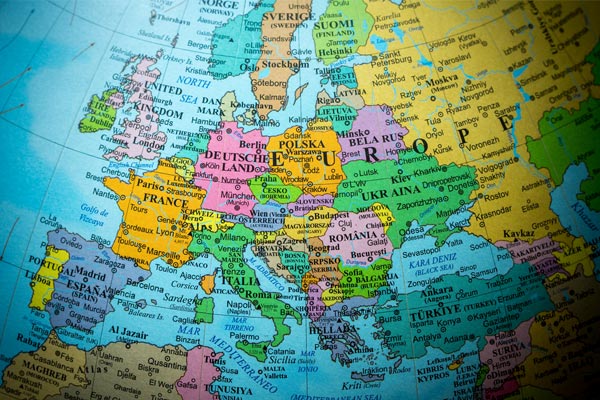Amidst persistent geopolitical and economic challenges, the European tourism sector is navigating a complex recovery landscape.
Despite surpassing pre-pandemic levels in arrivals and overnight stays early in 2024, inflation and conflicts in regions like Ukraine and Gaza pose significant hurdles.
Geopolitical Tensions and Economic Factors
The European tourism industry is grappling with significant challenges stemming from geopolitical tensions and ongoing economic factors. The war in Ukraine continues to disrupt tourism patterns, with notable impacts in Central and Eastern Europe. Additionally, the conflict in Gaza has led to a substantial decrease in travel from Israel, with arrivals down by 54% compared to the previous year.
According to the European Travel Commission (ETC), the most pressing issues facing tourism professionals include accommodation and business costs (59% and 52%, respectively), as well as staff shortages (52%). These economic pressures are compounded by the ongoing geopolitical instability, making recovery efforts increasingly complex for the sector.
Rising Trends and Positive Indicators
Despite these challenges, the tourism industry is witnessing some positive trends. In the first quarter of the year, foreign arrivals increased by 7.2%, and overnight stays rose by 6.5%, surpassing 2019 levels. This upward trend continued from 2023 when arrival and overnight statistics were just below those of 2019.
Travel has remained a key priority for 2024, with both intra-European and long-haul tourist spending showing significant growth early in the year.
Projected spending by travellers is expected to reach €742.8 billion this year, a 14.3% rise compared to 2023. This spending surge is attributed to inflation and changing travel preferences, potentially leading to longer stays or more varied experiences.
Intra-Regional Travel and Economic Impact
Intra-regional travel within Europe is a driving force behind recovery, with Germany, France, Italy, and the Netherlands leading this trend. The demand from the United States remains robust, reinforcing its position as Europe’s most significant long-haul source market, according to the ETC’s latest report.
The European football championships hosted by Germany are expected to significantly boost tourism expenditure, with Germany alone predicted to account for 16% of the total spend in Europe this year.
ETC President Miguel Sanz highlighted the anticipated rise in consumer travel spending across Europe, which is set to reach record numbers in the coming months. This boost is crucial for the recovery of businesses heavily affected by the pandemic and subsequent economic uncertainties.
Destination Performance in Southern and Nordic Europe
Southern European destinations are leading the way in international visitor number recovery compared to 2019. Notably, Serbia saw a 47% increase, Bulgaria 39%, and both Turkey and Malta experienced a 35% rise.
Portugal and Spain also reported impressive growths of 17% and 14%, respectively. These regions offer competitively priced holiday experiences, coupled with milder winter temperatures, drawing tourists in significant numbers.
Nordic countries are not far behind, with overnight stays surpassing pre-pandemic figures. Norway saw an 18% increase, Sweden 12%, and Denmark 9%. The increased interest in these regions is partly due to winter sports and the captivating allure of the Northern Lights.
Challenges in the Baltic Region
Conversely, the Baltic region is experiencing slower recovery rates. The war in Ukraine has particularly hindered tourism in Latvia, which recorded a 34% decrease in international arrivals post-pandemic.
Estonia and Lithuania are also facing challenges, with arrivals down by 15% and 14%, respectively. These declines highlight the ongoing impact of geopolitical tensions on the region’s tourism sector.
Effective strategies will be essential for recovery, especially to overcome the barriers presented by neighbouring conflict areas.
Sustainability and Responsible Tourism
The tourism sector is striving to adopt more responsible practices, aligning with sustainability goals and benefiting local communities. ETC President Miguel Sanz emphasised the ongoing efforts to balance economic growth with environmental preservation.
High prices and geopolitical risks are hurdles that remain, but the sector is focusing on promoting longer stays and diverse travel experiences. This approach aims to minimise the carbon footprint while maximising cultural and economic benefits for destinations.
Destinations in Southern Europe, in particular, are making strides in integrating sustainability into their tourism offerings, showcasing a commitment to responsible travel.
Future Outlook and Strategic Considerations
Looking ahead, the European tourism industry must remain adaptable to thrive amid evolving challenges. Strategic considerations include addressing economic pressures and enhancing collaborative efforts across borders.
Innovative solutions will be key, especially in overcoming logistical hurdles and ensuring the safety and satisfaction of travellers.
Overall, while obstacles remain, the pathway to recovery is well-defined through strategic planning and regional cooperation.
In conclusion, while European tourism shows clear signs of recovery, substantial challenges remain due to economic pressures and geopolitical uncertainties.
The sector’s resilience and ongoing strategic adaptations will be crucial to overcoming these obstacles and ensuring sustainable growth.

